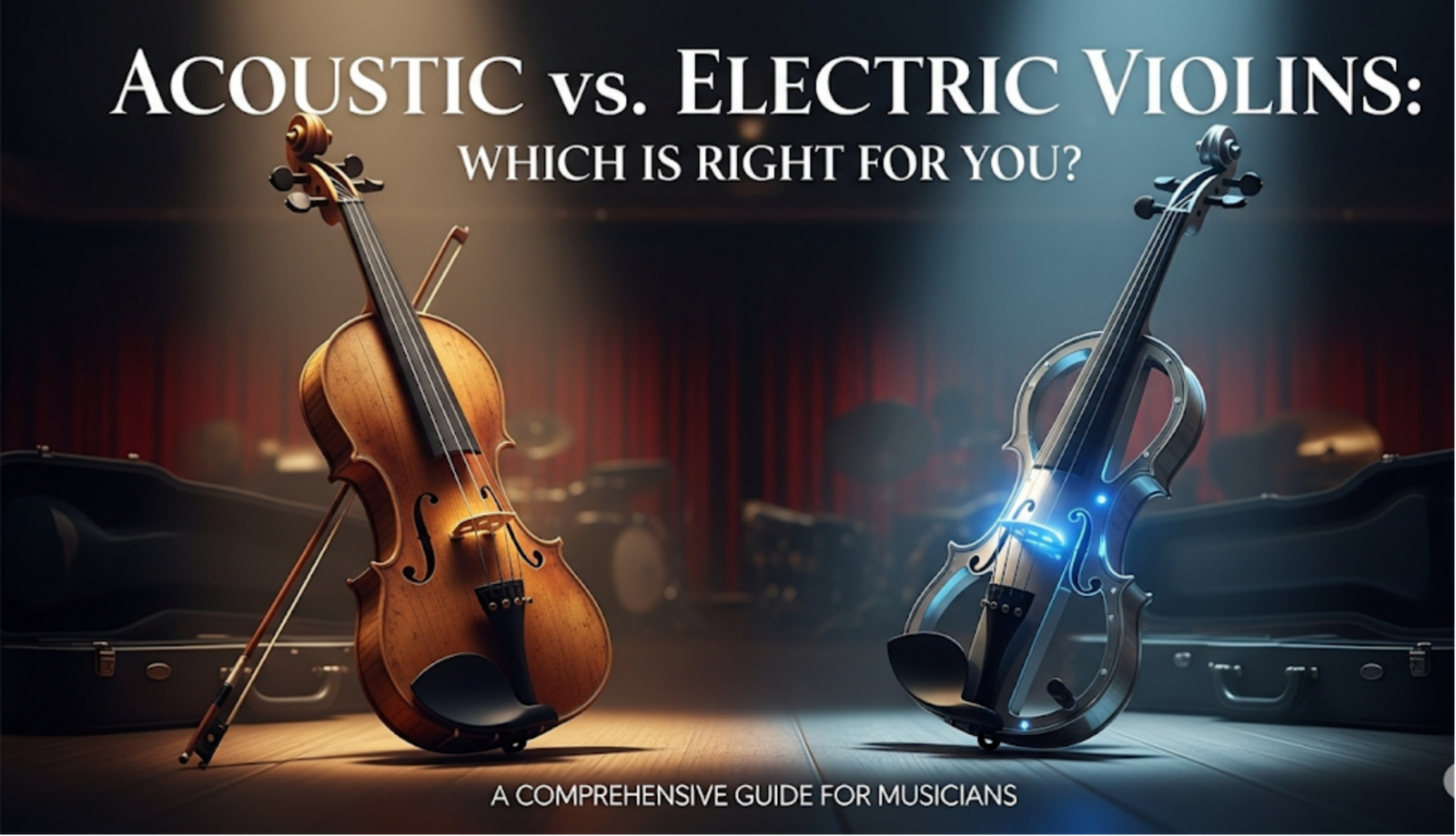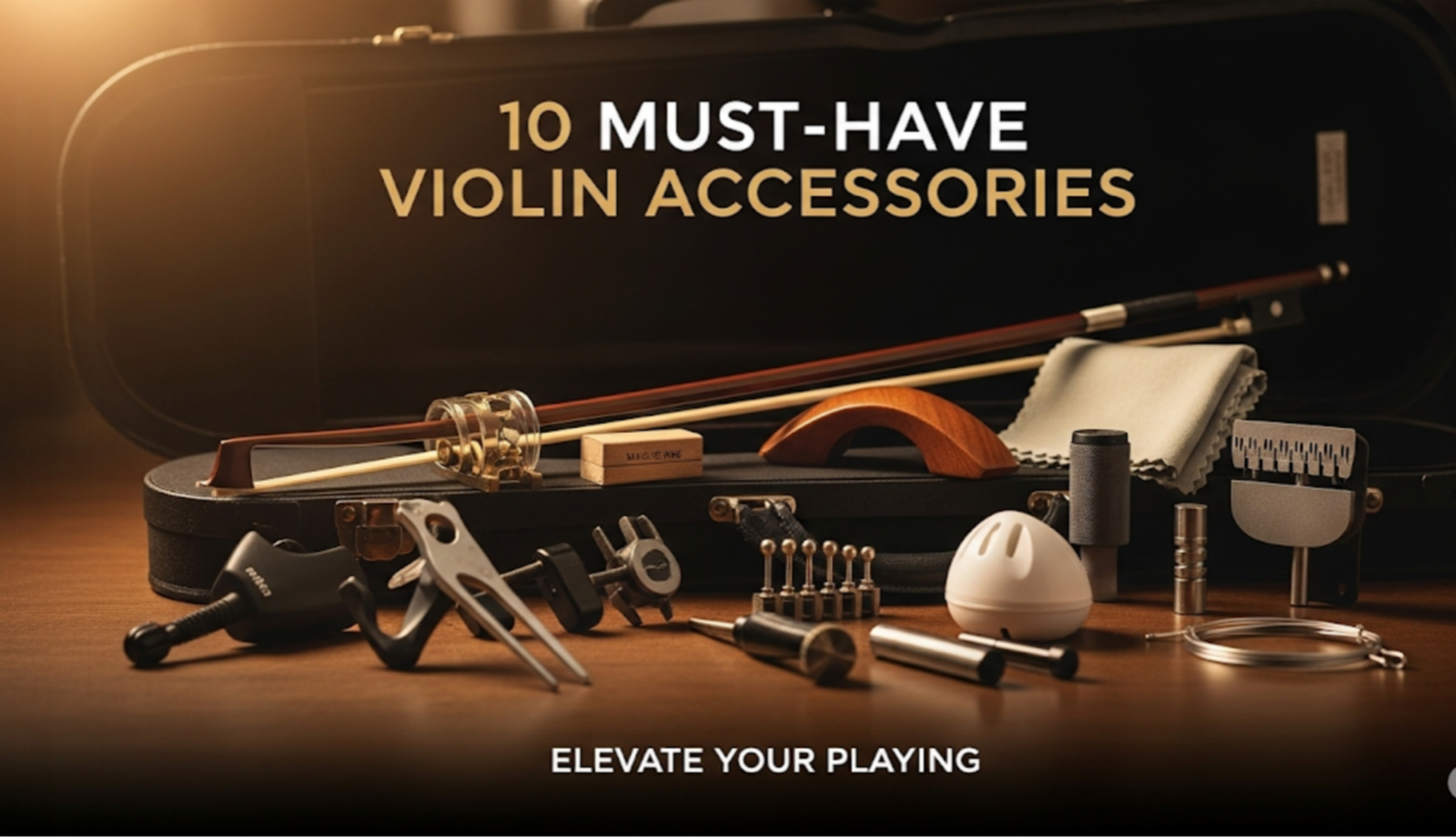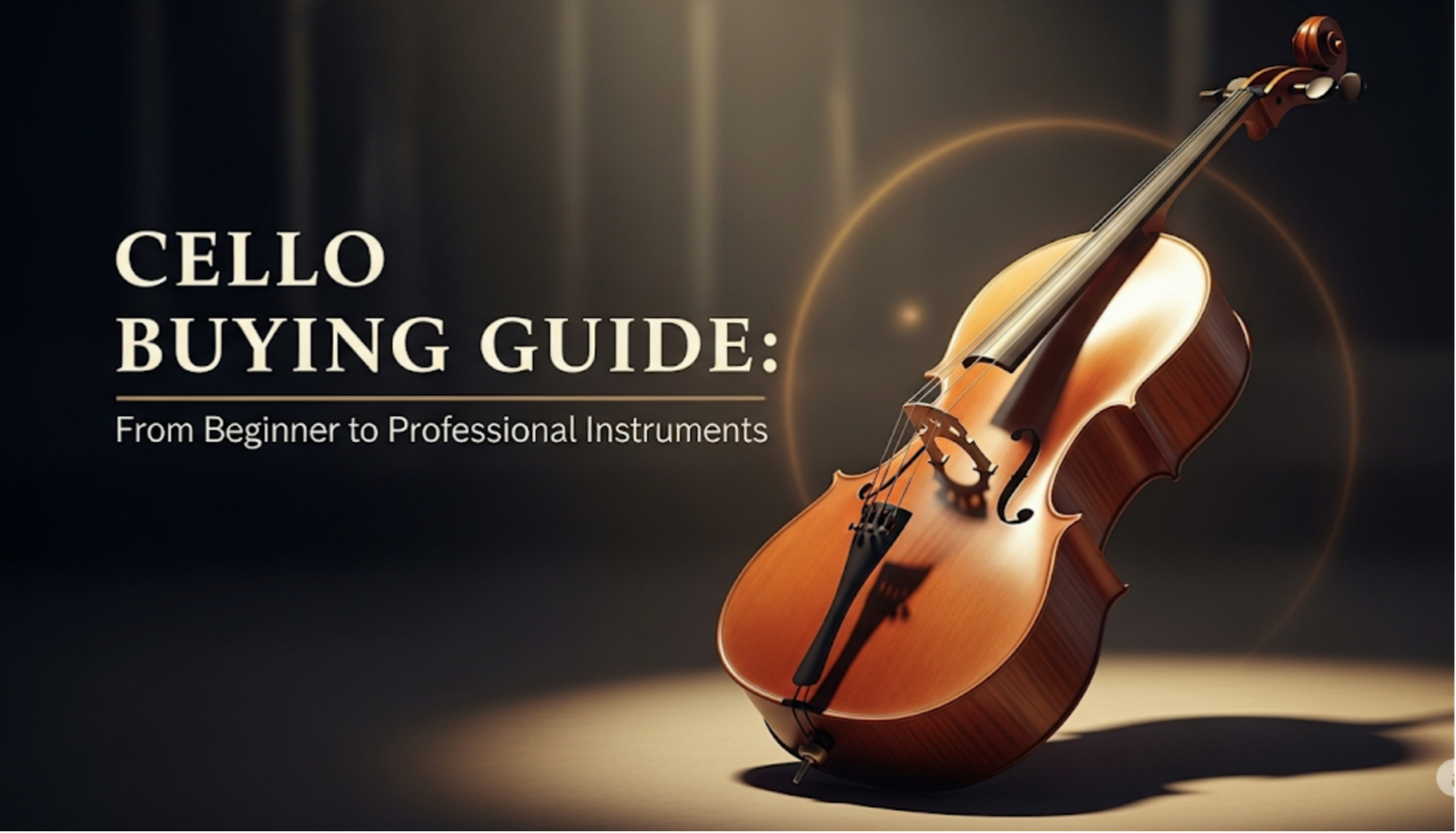How to Choose Your First Violin: A Beginner’s Guide

Your first violin should be a source of joy and not something to lose sleep over. Because of the multitude of choices as well as differing opinions, many beginners find themselves feeling stressed. Consider the possibility of a single poor decision sabotaging your musical journey even before it starts.
Most entry level violins below the $150 price point tend to be riddled with numerous issues such as shoddy tones, poor tuning stability, an
d a painful playability—all of which demotivates enthusiasts quickly.
Finding the right beginner violin is a lot easier than you might think.
Setting Your Violin Budget: How Much to Spend
How much does a violin cost? This question serves as the starting point of nearly every beginner’s journey. What is a smart budget? That balance for don’t overspend ensures you dodge VSOs (violin-shaped objects) that impede progress. A good starting investment is between $300 and $500, while alternative options do exist below and above this band.
Budget Tiers: Affordable Instruments and Where to Find Them
Affordability in violins can be stratified into three categories, differentiation being based on the skill of the maker and how long they will last. Under 150 dollars: entry level outfits fit temporary needs but use laminated wood and lack professional setup which means they will sound bad and tuning issues over time not to mention lack of a professional setup to stave off issues like lack of tuning stability. These are useful for very small children or very young ages for a limited duration of time . 150 to 400 dollars: This tier offers balanced quality for serious starters.
Rent vs Buy Violin: Which Saves More?
Your budget for the violin must take into consideration the renting vs buying dilemma. Renting a violin, which usually falls between $20-$40 a month, is perfect for growing children. This is useful for maintenance, resizing, and includes rent-to-own programs. However, long-term rental costs becoming exorbitantly wasteful, and quality of the instrument varies. Buying suits dedicated learners, especially adults.
While upfront costs are significantly higher (minimum $300), instruments tend to retain value and can be resold. Mid-range purchases ($400-$1000) tend to have much better sound and durability. Accelerating skill development at these levels is more reliable. Only rent if commitment is in doubt, or for children below the age of 10.
Violin Sizing Guide: For Both Children and Adults
The comfort, playability, and progress of a student greatly depend on having the correct sized violin. Attempting to play an improperly sized instrument can lead to physical strain and injury. Whether looking for violins for children or adults, precise sizing is always essential.
How to Measure for the Best Fit
Use arm length for accuracy instead of age. Extend your left arm fully to the side and measure your neck to palm distance. This distance measures 23 inches will get you a full sized 4/4 violin. For children under the age of 12, age is helpful as baseline but not always reliable hence must be backed up with measurements. When a child is fully extended in playing position the scroll of the violin should reach his or her collarbone.
Violin Size Chart: Quick Reference
As you search for the right fit, refer to our violin size chart: 1/16 violins fit ages 3-5 (arm length 14-15.5 inches). 1/4 is for ages 5-7 (17-18.5 inches). 1/2 is for ages 7-10 (19-20 inches). 3/4 is for ages 10-13 (21-22 inches). Full size 4/4 is for teens and adults (23 inches and above). Children need to upgrade their violins every 1-2 years.
Special Considerations: Violins for Children vs Adults
For adults, ergonomics is focused on the bodyframe of the individual. Full-size instruments (4/4) have standard string spacing as well as neck widths. For children, lightweight construction is essential to prevent fatigue. Some brands offer fractional sizes with thinner necks and shorter fingerboards. Always test with a shoulder rest fixed to the player’s neck height. Never size up “to grow into” as this leads to poor posture and technical limitations with movement.
Where to Buy Your First Violin: In-person Stores and Online Shops
Your choice of where to purchase a violin can greatly affect your experience and satisfaction. Local and online shops both have pros and understanding these pros helps you make the right choice for your situation.
Visiting Local Shops: Product Testing Perks
Attending a local shop grants the unique advantage of testing out violins firsthand. You are able to gauge sound, playability, and comfort well in advance especially for professional shops which have in-house luthiers to tweak instruments to optimal setup. Many shops also have trial periods during which you are permitted to take a violin home for thorough evaluation. In-person guided selection tailored to one’s level and preferences is often better done than done online which promotes this option for beginners who wish for more tailored guidance.
Purchasing violins online allows you to select from various retailers however, trusting the supplier is paramount. Arioseviolin.com is an exemplary case as a manufacturer and wholesaler of string instruments, providing custom violins at greatly priced options.
What is Ariose Music Unique Selling Proposition?
As a Chinese violin manufacturer, Ariose has direct access to their products and thus no middlemen. This greatly benefits retailers, schools, and individual buyers showing bulk purchasing.
- Customization Options:Their tailored violins allow for changes in wood type, finish, and accessories to best suit preferences.
- Quality Assurance:With over two decades of experience, Ariose upholds industry standards, offering a comprehensive three-year warranty on their standard products.
- Beginner-Friendly Options:For students and intermediate players, their spruce and maple violins are offered at reasonable prices, delivering exceptional sound and value.
Key Considerations When Ordering
Minimum Order: Retailers and bulk buyers will appreciate Ariose’s wholesale starting at 60 units.
- Global Shipping: With over 80 clients globally, they have streamlined shipping processes for prompt delivery.
- Trial Support:Direct trials are not provided, but warranty and return policies mitigate the risk of defect.
For those looking for high-quality yet affordable violins, Ariose Music is an excellent alternative to big-box retailers. Always check certifications and client reviews before placing an order.
Evaluating Violins: Expert Assessment Advice
Acquiring a violin entails more than pressing down on strings and producing sound. Effective evaluation ensures that you pick instruments that fit your skills and preferences while steering clear of low-quality ones.
Assessing The Best Violins For Beginners
When assessing the violins’ sound quality and playability, make sure that you attempt to play the same scales alongside simpler pieces on at least three different violins. Concentrate on uniform tone for each string and listen for buzzing or uneven sound production. Test the violin’s response to quiet and loud playing for skill level appropriate violins. The best beginner violin should not be too hard or too easy to play, and should give clear notes for varying levels of effort. Note the materials of the instrument – solid wood tops, especially spruce, resonate better compared to laminates.
The Role of Experts: Why Two People Listening Isn’t Enough
The best comparisons in sound and playability will often be missed by novices. Teachers and luthiers are trained to look out for imbalances such as unsymmetrical string height alongside weak bridge positioning that disrupt long-term playability. They know what features would be progress-stoppers and what features would allow growth. Prioritization of warm or bright tones in violins for classical or folk styled playing becomes effortless with expert guidance.
Materials, Setup & Accessories: Quality Assurance
Materials such as the accessories of a violin, the violin itself, and its setup affects the sound and playability of the instrument. Knowledge of these factors helps avoid instruments that needlessly frustrate beginners.
Violin Materials: Solid Wood vs Laminates
The best violins are built using solid spruce for the top and maple for the back and sides. These materials are far superior to cheap plywood or laminate violins, which offer muted and thin sounds as compared to resonant rich tones. Solid wood ages beautifully, improving with time whereas laminates tend to spoil. Inspect the wood grain on the instrument’s top. Straight, evenly spaced lines indicate better quality wood. Sensitive all-plywood construction “student” or “beginner” models tend to stagnate progress.
Non-Negotiable Setup Steps
A properly configured violin is both comfortable and playable. The bridge should be fitted and positioned to preserve the string spacing at equal height and distance for smooth fingerboard access. Nut height should allow strings to rest over the fingerboard without excessive elevation. The soundpost must also be properly placed within the violin to allow optimum sound projection. A luthier should adjust these elements for most novice violins straight out of the box, as budget instruments tend to arrive with very poor setups.
Important Accessories for the Beginner Violinist
Accessories are equally important as instruments and can affect the learning journey for a beginner violinist. A horsehair bow enhances the sound of the violin far more than synthetic alternatives. The bow and instrument must be kept in a well protected case to shield it from damage and rosin must be applied on the bow for smoother operations. Shoulder rests alleviate strain, aid posture, and make long practice sessions more comfortable. Digital tuners aid precision making them vital for learners. These accessories improve performance while also making learning enjoyable.
Warranty, Insurance & Final Checks
Addressing protection and assessment ensures long term satisfaction for your violin purchase. These last steps confirm the instrument is suitable for you, and avoids expensive surprises later on.
The Importance of Warranty Coverage
A warranty is designed to protect your investment in multiple ways. Most comprehensive warranties have provisions to cover common repairs open seams, cracks, or internal structural damage covered within the reasonable scope of use. Virtually all good manufacturers provide at least a one-year warranty for workmanship and materials. Some of these warranties may be voided if unauthorized repairs are attempted, so read the fine print. This sort of protection is useful for learning musicians who do not know how to identify problems that might arise later on.
Trial Periods
The majority of violin shops provide a trial period of about one to two weeks. This is beneficial as it allows practice evaluation in your own space, as opposed to a showroom. Make sure to assess the instrument thoroughly during the trial period. This includes playing it at different times during the day and in various locations.
See how it reacts to the temperature changes around your house. Listen for new buzzing sounds or signs of tuning instability that could indicate setup problems. If the instrument is being rented, check that the policy allows for sustained maintenance and size adaptations for growing children.
Conclusion
The first violin choice becomes easier when concentrating on a few important elements. Your budget should be balanced between cost and quality; a good starting beginner violin typically ranges from $300 to $500. Measure arm length to check sizing. Ensure proper sizing for children on the charts. Bring an instructor or luthier to help assess the violin’s tone and playability for the different passage tests. Prioritize materials like spruce tops and backs made of maple over laminated wood to greatly enhance sound quality and durability.
Remember: “With these tips, you’re ready to select the best beginner violin with confidence.” Instruments that are well-selected enhance the learning experience and prevent initial frustration. With your specific goals, seek out experienced teachers or violin makers for tailored advice.
Look at wholesale violins? Get a quote from Ariose Music today and discuss your requirements to get direct from the factory pricing on quality instruments.



